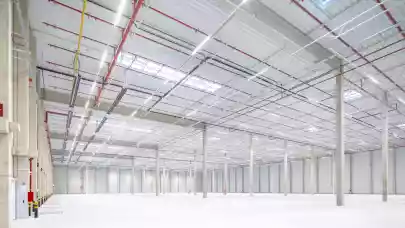
High retail space saturation will attract new tenants to Poland. It is a hallmark of a mature and stable market where retailers are able to make store turnover and expansion plans a lot more easily, says Szymon Łukasik, Head of Retail at Cresa Poland.
Poland’s retail space provision stands at 379 sqm per 1,000 inhabitants, placing the country in the middle of the European ranking, alongside the likes of France, the UK and Portugal. Stand-out cities include Lublin, Poznań and Wrocław with retail space saturation rates at 1,101 sqm, 1,069 sqm and 1,068 sqm per 1,000 inhabitants, respectively.
This makes Poland a mature and varied market for overseas retailers who want to gain a foothold in our country. Recent retail completions have satisfied demand for modern retail space. The Polish market offers a variety of shopping centres adapted to local needs. Looking ahead, investors will focus on quality improvements and refurbishments of existing shopping centres.
Contrary to what might be expected, this represents a very comfortable situation for retailers who - while opening a chain of stores - do not need to factor in a risk of new large-scale schemes being developed nearby with which they would have to share turnover. That’s why today decisions are made on the basis of facts, not uncertain forecasts. In addition to business being more predictable on such a stable market, it is easier to plan a growth strategy. It is also easier to make sales forecasts and - most importantly - to make assumptions that will not be far from true.
High market saturation also means a large number of various schemes to choose from - tenants can compare sizes, locations, tenant-mixes, F&B and leisure facilities, and rental levels. On a mature market it is a lot easier to roll out a chain of stores that will be ideally suited to a tenant’s needs and requirements.
And finally, the process of suitable space acquisition and negotiating tenant-favourable lease conditions is a lot easier on a saturated market, provided that tenants do not intend to open their first stores at leading shopping centres. Top retail schemes operate on completely different terms from the rest of the market – their landlords dictate conditions and select partners. Leasing space there is very difficult, albeit not impossible. While planning to expand into Poland, it is always advisable to seek support of an advisor with a local market insight who knows where retail space will be vacated in the near future, and will be able to begin negotiations with a landlord at the best time.
The relatively limited competition on the retail market on which there are approximately 300 retailers also encourages brands to open stores in Poland. By comparison, this figure on most western markets stands at approximately 600. Meanwhile, amid the steadily growing affluence of the Polish society the spending power of Polish people is rising – last year it amounted to €6,710 per capita, which is the annual equivalent of approximately PLN 28,500.
The Polish market reached maturity and saturation much faster than Western Europe. Galeria Mokotów, the first truly modern shopping centre in Poland, was opened in 2000. Everything happened very quickly, but today - a mere 18 years later - the Polish retail market is practically saturated and, most importantly, stable and predictable. It will only be a matter of time before new overseas brands begin to establish a presence in Poland.



